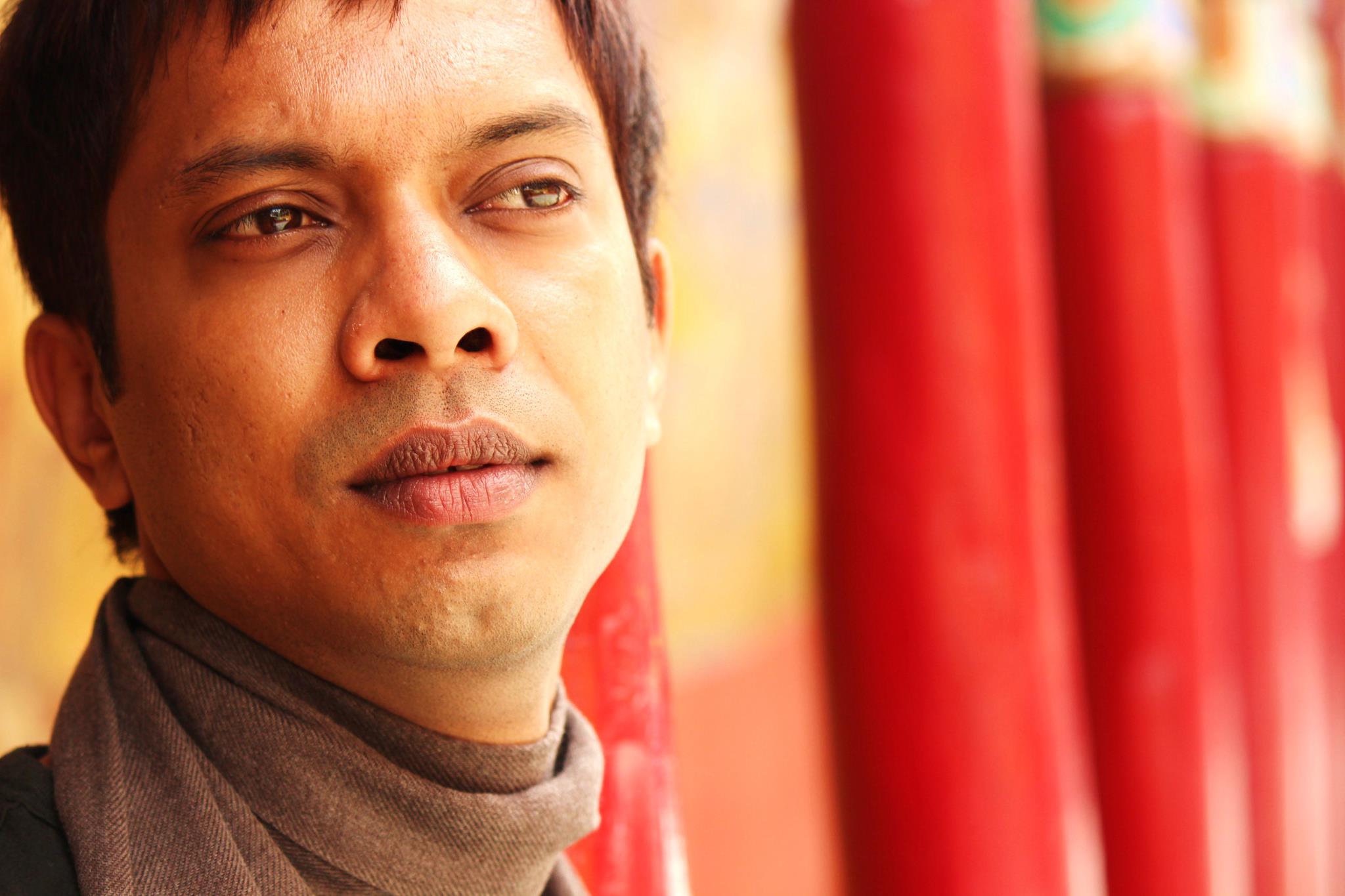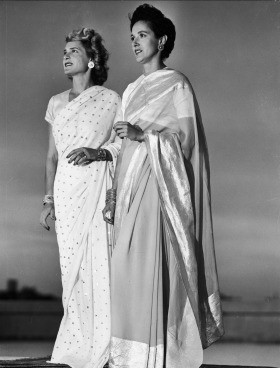Nishant Roy Bombarde
 For times immemorial, the Ganges has marked the geography, history & mythology of the concept that we call India today. Mighty empires have risen & fallen on its banks. It has been the lifeline of the populace inhabiting the neighbouring areas for centuries. But her most important purpose makes her stand apart from the other rivers throughout the world. In Hindu mythology she is supposed to be a goddess. The Hindus believe that she was brought down on earth by one Bhagirath to wash away the ashes of his forefathers. Since then, Ganga has been abetting the Hindus in absolution of their sins.
For times immemorial, the Ganges has marked the geography, history & mythology of the concept that we call India today. Mighty empires have risen & fallen on its banks. It has been the lifeline of the populace inhabiting the neighbouring areas for centuries. But her most important purpose makes her stand apart from the other rivers throughout the world. In Hindu mythology she is supposed to be a goddess. The Hindus believe that she was brought down on earth by one Bhagirath to wash away the ashes of his forefathers. Since then, Ganga has been abetting the Hindus in absolution of their sins.
Two rivers including the Ganges (and an unseen third one in spirit) meet at one of the most auspicious spots in Hindu mythology called sangam (the union). The sangam holds a beautiful mirror to Indian society. Here flows the mixture of two different entities, could you tell one from the other, it asks? For a society that still divides humans at birth on the basis of caste, this is a tight slap by nature on the face of the very worshippers who hold the place in utmost regard! On the banks of Ganges is Kashi ghat that is believed to be the door to heaven and way to moksha, salvation. Ganga ghat is one of the most unique spaces in the Indian caste structure as this is the place where the Doms (low caste pyre burners) perform their lowly duties of burning dead bodies. The ghat is also where the Brahmins (high caste priests) take their first bath starting the day’s rituals. This is also the place where everyone comes to die. Neeraj Ghaywan bases his film Masaan (a colloquial word for Smashaan, i.e. crematorium) at this very ghat, a perfect space for some new age Caste Drama.
Talking purely in terms of cinema, Masaan is a beautiful piece of new age Indian film. Even though Avinash Arun could have created breathtaking images like in Killa, he sticks to the bare minimum here. Probably Ghaywan wanted his world to look real than exotic and he succeeds. With the thoughtful cinematography and a perfect etching of Benarsi characters by Varun Grover, we enter their world within minutes of the beginning of the film. But above all, Dushyant Kumar’s “tu kisi rail si guzarti hain, main kisi pull sa thartharaata hoon” (You swish past like a train, I quiver like a bridge) is the soul of the film. These lines don’t just make a beautiful anthem for Deepak & Shaalu, the lead pair of the film, but surmise a perennial struggle of lovebirds from higher & lower castes across the Indian subcontinent. Deepak is a dom, lower caste who burns the funeral pyres. Shaalu is a Gupta, higher caste traders. You know it’s a ticking bomb even as they fall in love in the backdrop of the soulful Indian Ocean song, the heat of which you feel even in the air-conditioned multiplex. You feel it because you are not a part of a monolithic casteless society, even though that’s what most of the upper caste India would have you believe.
(Spoiler alert ahead: This is an analytical piece and not a review. If you intend to watch Masaan and don’t like spoilers, please read it after watching the film)
It would be obvious to draw parallels between Masaan and the 2014 Marathi film Fandry by Nagraj Manjule, because both touch upon love crossing the boundary of caste. In Masaan, Deepak gives in his ‘destiny’ into the hands of the Ganges and accepts the fate brought upon to him by nature. He probably accepts it since it is the Ganges that takes away what was so dear to him. He moves on too. (Good sign? Let’s discuss that later.) But in Fandry, Jabya breaks the boundaries set upon him by centuries of supremacy, slavery & derogation. His last stone that hits the screen gives us the best underdog rebel Indian celluloid has ever seen. The difference in attitudes could be the lens with which the writer is seeing the narrative of the lower caste protagonist. Grover’s pen, which inadvertently has the upper caste lens on it and which obviously believes in moksha, carves out a character who dares to go beyond the conventions of the society but gives in against mighty nature. You can fight society, but how will you fight nature? Good plot point, safe statement.
Manjule’s Jabya though, takes in all the bullying throughout the film only in the hope that Shaalu (yes coincidentally, the same name here too) will one day accept his love. But at the end when she stands as a mute spectator, almost enjoying the spectacle made out of his derogation, he bursts out and hurls the anger back at the viewers, the society. But as I said earlier, this is the obvious comparison between the two films. The interesting trajectory, however, is the journey of both the Shaalus in the films.
Fandry’s Shaalu is, as mentioned before, a mute spectator, almost clueless of the crush Jabya has on her. Whether she has an idea of his undying love for her, is something the writer-director leaves open ended for us to wonder! In that one instance, where Jabya is vying for her attention at the school and she turns & smiles, looking at him, you almost feel that yes, probably there is something. The progression of her character doesn’t go beyond this though. Far from being empathetic, she almost enjoys Jabya getting bullied at two instances in the film. It is probably the bitter experiences of the writer’s own life that has made Shaalu what she is – aloof, poisonously attractive, forbidden! But Masaan’s Shaalu goes a step further.
On learning that Deepak is from a low caste, Masaan’s Shaalu quivers at the beginning. This is the first time we get a glimpse of her elite family. At a restaurant on the way to a pilgrimage, a lady from her family remarks that, “the food is good because the restaurant belongs to high castes like them”. In a hostile environment like this, Shaalu is won over by the birthday present that Deepak had given her – a compilation of her poetry recital mixed with Bollywood songs. She calls Deepak and makes that most endearing statement, “I will elope with you if need be. You just get a good job, I will take care of the rest.” That the story turns upside down after this would irk many Dalit reviewers, but we need to ponder over how far have we travelled in the entire trajectory of Shaalus. Let us do a small flashback.
Kasturi (Devika Rani) of the 1936 Achhut Kanya is victim of a diabolical conspiracy and has to die for the society to accept her as pure even though she hails from lowly origins (the Sita syndrome). The 1959 Sujata portrays a passive abla naari Sujata (Nutan) who has to give blood to her Brahmin foster mother to prove her loyalty (blood again). Though the 1976 Manthan ends on a positive ‘churning’, the mutual admiration of Dr. Rao (Girish Karnad) & Bindu (Smita Patil) comes to an abrupt end when both of their spouses make a surprise come back. Later Bindu is also forced by the Panch to put her thumb impression on a document that says Dr. Rao raped her. The baton that is irrevocably in the hand of the upper caste male who is invariably helpless seems to shift towards women, Dalit women included, during the so-called Indian Parallel Cinema movement. Dr. Rao & Bindu are aggressively proactive about rights but fall just short of crossing that boundary when it comes to love. That they are married compounds the effect.
Come 1994 and the Marathi film Mukta has Mukta (Sonali Kulkarni) fall in love with the fiery Dalit rights activist Milind Wagh (Avinash Narkar) even as her elite Maratha family feels embarrassed at different levels. The film ends in a shootout where the bullet meant for Milind accidently hits one of his friends & co-activists. The bullet warns them of the dire consequences of their alliance & fight for Dalit rights. The trembling Mukta holds onto Milind’s arms making it clear that she is not chickening out; as the screen slowly fades out into blue (the colour of Dalit revolution). Twenty years go by and a strong statement comes out from a Dalit filmmaker which challenges the revolutions seen from an upper caste lens. Fandry is a personal experience on the bitter tasting celluloid and rips off the goody conclusions of an inter-caste love! That Shaalu has dared to take that journey from Fandry to Masaan is indeed welcoming. That Deepak (lamp) moves on from his loss and finally reaches his Devi (goddess) and together they start that journey towards sangam in the final scene of the film is heartwarming. Would this voyage to salvation go down well with the believers who hold Ganga in high regard? Whether upper caste India will accept this sangam (union) and consider it as pure as the union of three holy rivers is worth pondering! But that Devi of Masaan, the Shaalu who we are left with in the end, isn’t grappling with the Sita syndrome but has erred and marred enough to be human makes it a gratifying viewing experience. If cinema could ever lead a viewer to salvation, it would be through such a union of Devi & Deepak.
~~~
Nishant Roy Bombarde works for Essel Vision, the premier media house in Marathi, as an Executive Producer. He also heads the Social Media promotions at the firm. A credited writer for television show Fear Files, he has now shot his first short film Daaravtha meaning threshold in Zaadi; a local dialect of Marathi. The film is a compilation of real life inspirations around him and currently on the edit table.
Pictures courtesy: the net.










